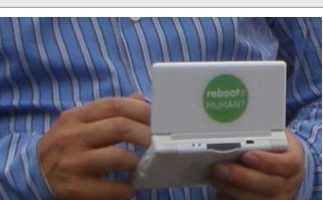Computerworld – Dyster fremtid for Radikales åbne standarder
Dette lyder desværre ikke godt. Der var ellers optimisme vedr. forslaget fra det Radikale Venstre om at det offentlige skal indføre åbne standarder senest i 2008. Desværre har Venstres ordfører, Michael Aastrup Jensen, ikke forstået ret meget af det:
Forslaget fra De Radikale lægger op til, at det offentlige skal vælge side og dele seng med den ene part i spørgsmålet om åbne standarder. Det kan jeg sige helt klart, at vi vil stemme nej til.
Der er ikke tale om at vælge side og dele seng med den ene part, det drejer sig, bla., om hvem der ejer vores dokumenter, de åbne standarder, ikke kun indenfor dokument formater, er jo netop støttet af et bredt udvalg af branchen, i modsætning til den “anden part” (som må være Microsoft). Det lyder mere som om det er Venstre, og regeringen, der deler seng med den “anden part”.
Problemet med De Radikales forslag er nok også den noget bombastiske formulering.
Folketinget pålægger regeringen at sikre, at det offentliges brug af informationsteknologi, herunder brug af software, er baseret på åbne standarder.
Staten bør senest den 1. januar 2008 indføre og vedligeholde et sæt af åbne standarder, der kan tjene til inspiration for øvrige offentlige myndigheder. Åbne standarder bør være en del af grundlaget for det offentliges indkøb af it-software med henblik på at fremme konkurrencen.
Staten bør sikre, at alle digitale informationer og data, som det offentlige udveksler med borgere, virksomheder og institutioner, findes i formater, der er baseret på åbne standarder.
Det havde måske været at foretrække, hvis man startede med at tage fat på nøgleområder, f.eks. dokument udveksling, og gøre som Fr. Anne Grete Holmsgaard foreslår, nemlig at beslutte at standardisere på OpenDocument formatet. Med denne beslutning i hånden kan staten gå til leverandører som Microsoft, og forlange at de begynder at understøtter OpenDocument, hvis de fortsat vil være leverandører til det offentlige. Personligt forstår jeg ikke hvorfor Microsoft ikke understøtter OpenDocument, argumentet om at deres alternativ, XML Reference Schemas/OpenXML sikrer bagud kompatibilitet lyder ikke helt troværdigt.
Generelt burde man hellere fokusere på at adskille indhold og design, og skifte produktionen af indhold væk fra traditionelle kontor produktivitets programmer, over til webbaserede systemer som Wikier og mere traditionelle Content Managenemt Systemer.
Men det offentliges udfordringer på det IT arkitektoniske går naturligvis langt udover en diskussion om noget så banalt som dokumenter. Når det gælder infrastrukturen, så er jeg af den opfattelse at det er på tide at skifte til en meget mere centraliseret model, og at vi på den måde vil kunne løsrive os fra skrivebordet og den frygtlige anakronisme, den stationære pc.
Men det er måske en opgave for EU. Jeg er optimist, og mener at tiden arbejder for de åbne standarder, og de centraliserede løsninger.
